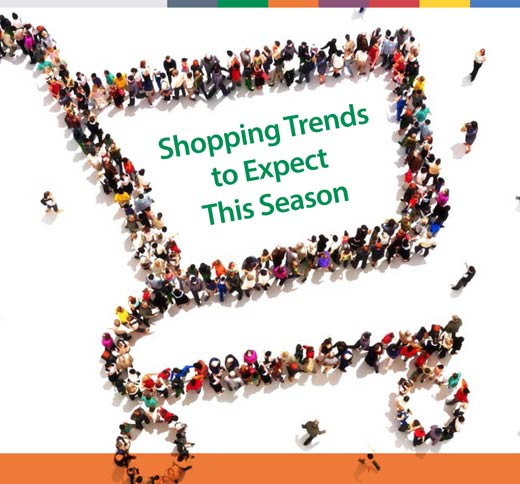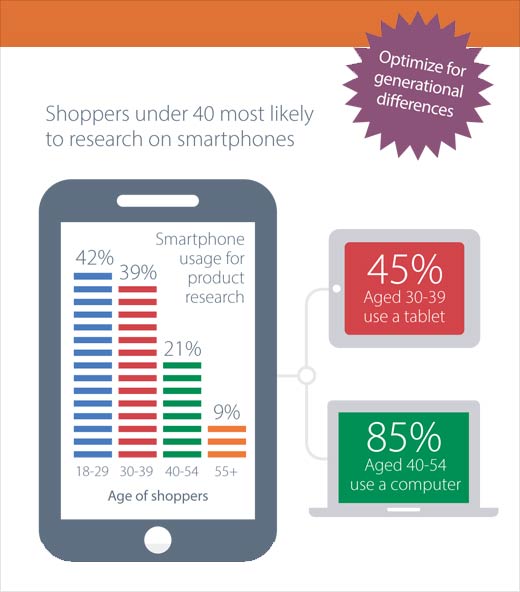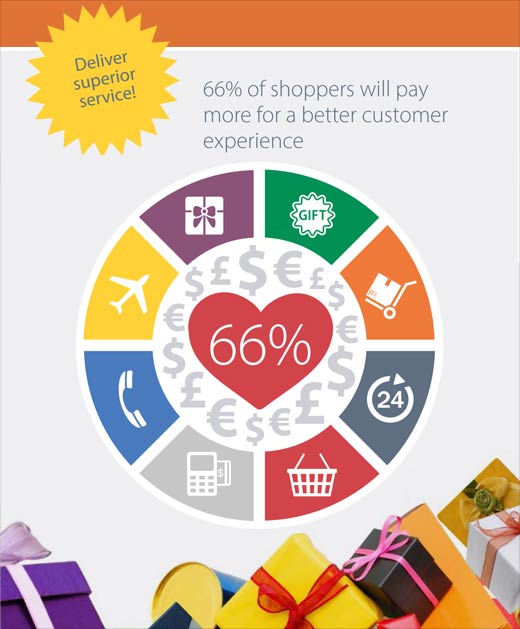What do holiday shoppers want? Great deals, of course. But a recent global survey of more than 3,000 consumers, conducted by SDL, also found that they want a consistent shopping experience, regardless of what channel or device they are using to interact with retailers. Nearly 90 percent of respondents reported this expectation, a 17 percent increase over what consumers reported just last year.
Given that about half of holiday shoppers do research online, many via mobile devices, before purchasing items in-store, or that 60 percent of shoppers report doing at least some showrooming – checking out products in-store before purchasing online – it’s imperative that brands present a consistent experience across all channels. Unfortunately, 47 percent of holiday shoppers report having been frustrated that in-store and online experiences and information didn’t match up.
“Consumers today engage with organizations through multiple touchpoints,” said Mark Lancaster, CEO and founder, SDL. “This holiday season, more than ever, brands need to be prepared to cater to shoppers wherever they are as they research and purchase products – in-store, online or on their mobile devices. A consistent, superior experience across all interaction channels has become something that customers not only expect, but they demand it; and the brands that can best meet this demand will build customer relationships that continue long after the holiday season.”
Preparing for Holiday Customers
Click through for results from a study looking at customer expectations and behaviors for this coming holiday season, conducted by SDL.
Remember November
Have you started your holiday shopping yet? Some think it’s never too early. In fact, 52 percent of shoppers think holiday promotions should start in November. An additional 28 percent of respondents thought promotions should begin as early as October.
Deal Finders
From TV shows to online forums and blogging sites, finding a great deal has become a passion and favorite pastime for many of today’s savvy shoppers. Fifty-three percent of survey respondents reported that they engaged in “deal finding” (researching online, but buying in-store) at least some of the time.
Gift Ideas
Not sure what you want to get those special people in your life? Browsing through store aisles can provide inspiration and help narrow your choices down to the perfect gift. In fact, 63 percent of shoppers still do research for gift ideas in-store, but online search is closing in fast, with 46 percent of respondents choosing to search online in addition to or in place of in-store research.
Showrooming
People still like to see, touch and connect with products they’re interested in purchasing, and showrooming has seen explosive growth over the past couple of years. Sixty percent of shoppers reported engaging in showrooming, but then buying the product online. Keeping customers requires a solid and consistent message in-store and online.
Generational Research
The study found that shoppers under 30 were the most likely to research on smartphones (42 percent). Shoppers aged 30 to 39 were a little more likely to use a tablet (45 percent) versus a smartphone (39 percent). Shoppers aged 40 to 54 were much more likely to use a computer (85 percent) than a smartphone (21 percent).
Generational Purchasing
Those aged 30 to 39 trumped all other groups, including millennials, when making purchases via a tablet (36 percent versus 23 percent). Those aged 40 to 54 were much more likely to buy via a computer (80 percent) than a tablet (22 percent). Millennials were about even on making purchasing via a smartphone or tablet, at 23 percent.
Leading the Pack
Online growth is expected to continue its monumental rise. Currently, the U.S.A. (31 percent), UK (31 percent) and Germany (30 percent) lead the pack in online-only shopping.
Online Shopper Top Frustrations
The top three frustrations with online shopping include: shows out-of-stock items (60 percent), not enough information available (52 percent) and in-store impressions are different from online impressions (47 percent).
Paying More for Service
Sixty-six percent of consumers say they are willing to pay a premium for a positive customer experience, though this varies across generations and genders.
- Seventeen percent of 18-to-29 year olds strongly agree that they are willing to pay more for a product if the brand delivers a positive customer experience. Those aged 30 to 39 feel even more so, with 19 percent agreeing strongly. However, this percentage dips with the older generations. Just 8 and 6 percent of those aged 40 to 54, and 55+, respectively, strongly agreed with this.
- Males and females also feel differently about paying more for a positive customer experience; 12 percent of males, compared to 9 percent of females, strongly agreed with this.












